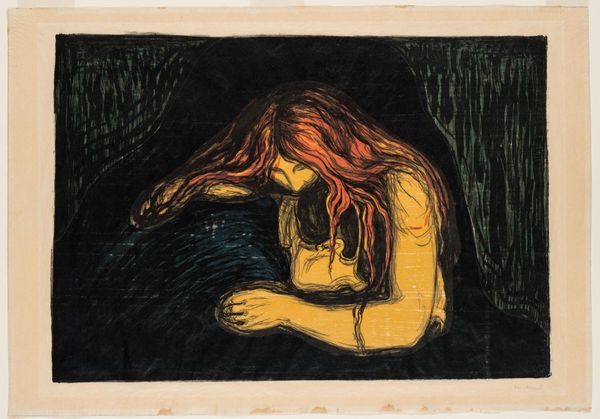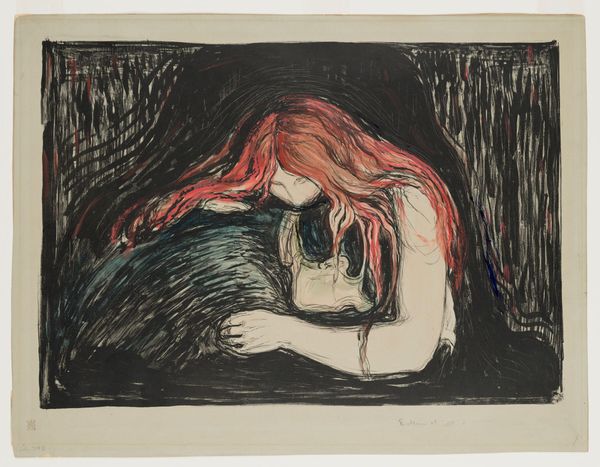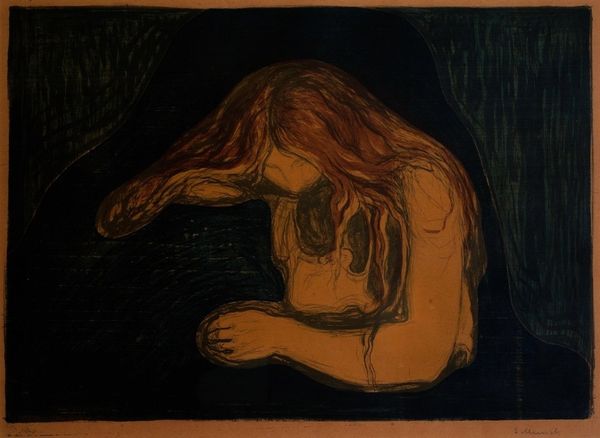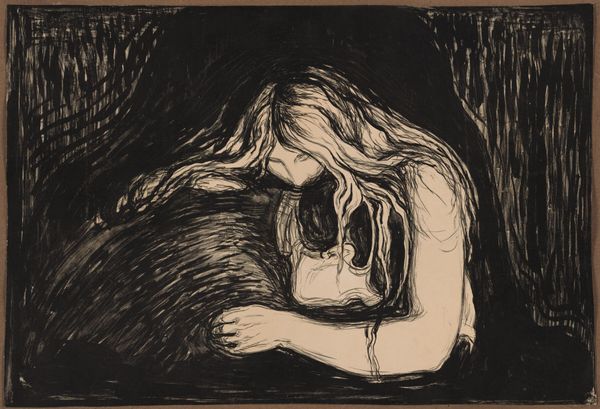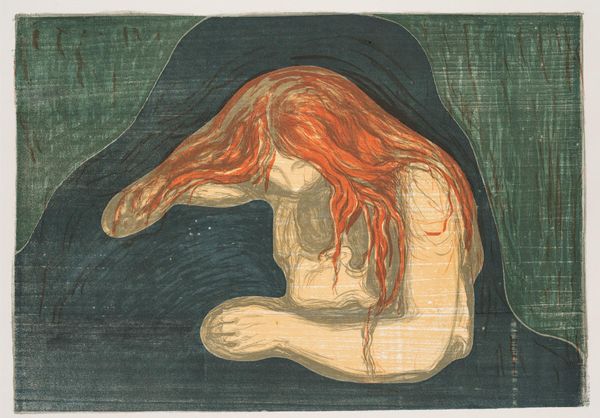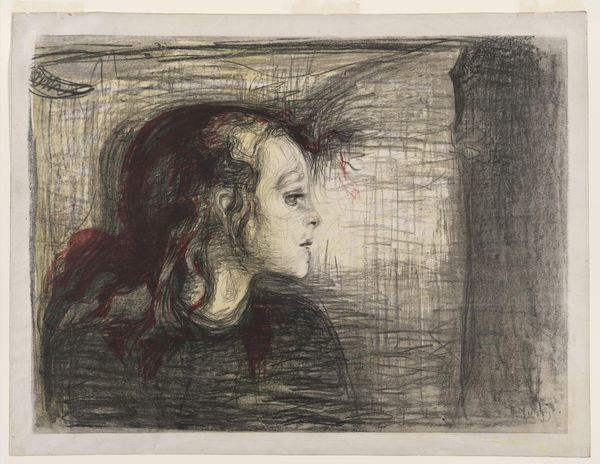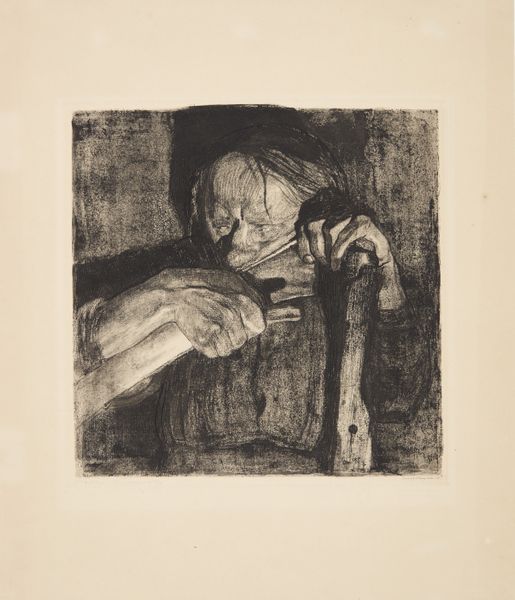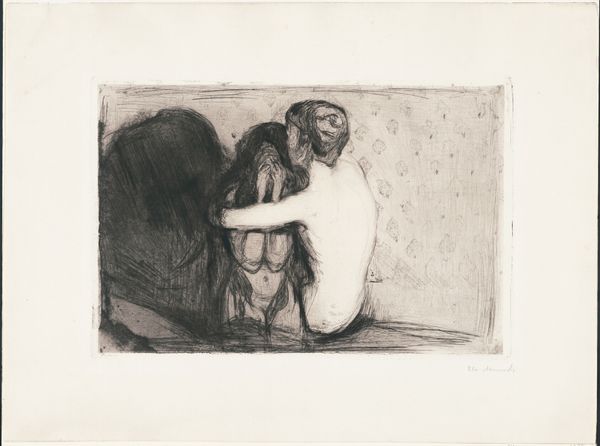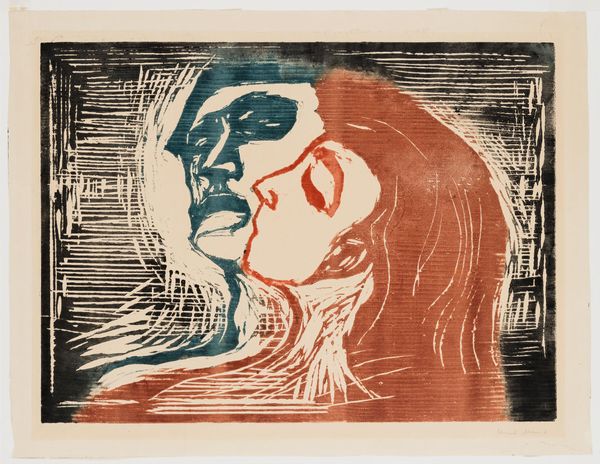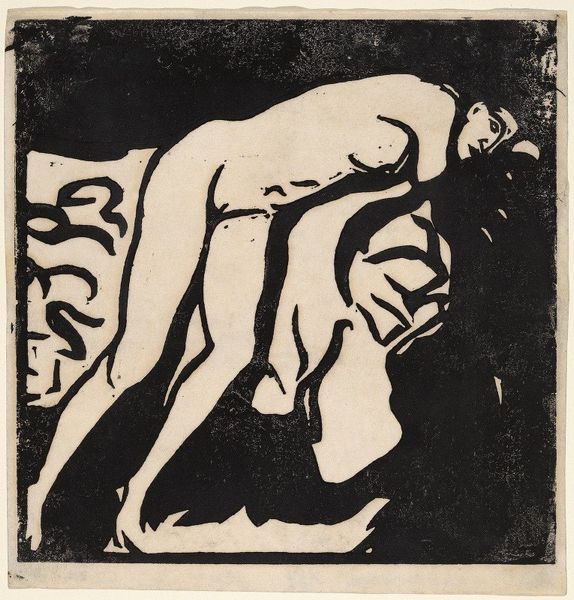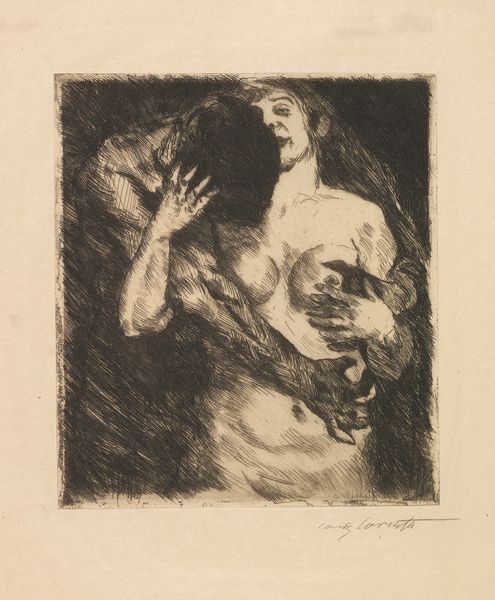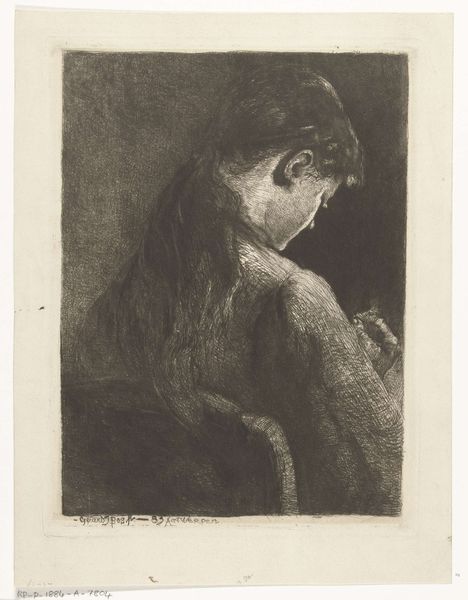
drawing, lithograph, print, paper
#
portrait
#
drawing
#
lithograph
# print
#
paper
#
expressionism
#
symbolism
#
nude
Dimensions: 408 × 571 mm (plate); 618 × 700 mm (sheet)
Copyright: Public Domain
Editor: Today we're looking at Edvard Munch's "The Vampire II," a lithograph created between 1895 and 1902. The print on paper shows a woman with striking red hair seemingly embracing a man, although the mood is far from tender. What strikes you most about this image? Curator: The title itself is key, isn't it? Munch gives us a framework for understanding the embrace not as an act of love, but of predation. Consider the historical context: turn-of-the-century anxieties surrounding female sexuality. Woman as 'femme fatale,' a dangerous figure draining men of their life force—both literally and metaphorically, financially and emotionally. How does that read to you in our current moment? Editor: I see what you mean. The way she's positioned over him, the darkness of the print... It does feel like she's overpowering him. Is Munch making a commentary on power dynamics? Curator: Precisely. It's impossible to divorce this image from broader cultural narratives around gender and power. We can examine it through a feminist lens, interrogating the ways in which female agency, particularly sexual agency, was—and continues to be—pathologized. Think of the legacy of the witch hunts. Consider the art historical tropes that portray women as either virgin or whore. Munch seems to be playing with these stereotypes, while also expressing a deep personal anxiety, I think. Do you feel empathy for the man in the image, or for the woman? Or something else entirely? Editor: I hadn't thought about it that way. I think I'm feeling more empathy for the woman now, seeing how the artist and society have positioned her within limiting roles. Thank you, it is great food for thought! Curator: Indeed, Munch gives us an opportunity to understand visual culture as a critical site for the production and negotiation of gendered meanings, an arena still actively contested today.
Comments
No comments
Be the first to comment and join the conversation on the ultimate creative platform.
